After months of negotiations, Ukraine will be getting the F-16s it has been begging for – here’s why that’s important.
After months of diplomatic pressure to supply Ukrainian forces with advanced fighter jets, European governments have agreed to supply F-16 aircraft to the Ukrainian air force.
The deal, under which Denmark and the Netherlands will provide Ukraine with about 40 of their F-16 fighters, has taken lengthy negotiations as the US was initially reluctant to give permission, something that was needed under the terms of the aircraft’s original sale to the European countries.
Despite the political agreements to supply Ukraine with these aircraft, significant challenges still remain before these fighters can be used in action in Ukraine – probably not until early 2024. The training of Ukrainian pilots on the F-16 began in earnest in August and will take several months. Meanwhile, changes to Ukraine’s military doctrine and operational principles and procedures will be needed.
But greater integration of western weapons systems, such as the F-16, will draw Ukraine further into Nato’s sphere of influence and logistical chain. In the case of the new fighter aircraft this is important as Ukraine’s airforce has until now mainly comprised older, Russian-built jets. This has made the acquisition of spare parts for maintenance and repair that much more difficult.
Battle for control of the air
The F-16 is reckoned to be among the best and most manoeuvrable warplanes currently operating and will provide Ukrainian forces with an edge over the Russian warplanes that are currently dominating the skies over the combat zones.
Yuriy Ihnat, a spokesman for the Ukrainian air force, told Ukrainian TV recently that the F-16 is “capable of changing the course of events, capable of providing us with what is needed most today – air superiority over occupied territories”. He added that Russia had “around eight or nine fighters over occupied territories … dropping guided bombs and launching aviation missiles. With F-16, they won’t be able to do that… Air superiority is the key to success on the ground”.
The first major area in which Ukrainian forces will gain advantage as a result of of the F-16s will be in the continuing battle for control of the air. Currently, the Ukrainian air force is restricted to sending one to two jets on missions and these are conducted at low level in order to avoid Russian ground-based air defences and attack by the Russian air force.
The F-16 is better equipped to go up against Russia’s MiGs than the aircraft Ukraine has relied on until now. Having the edge when it comes to controlling the skies above the battlefield means Ukraine will gain the advantage when it comes to the air reconnaissance, crucial for understanding the battlefield.
The US air force (USAF) rates the F-16 as having a greater “combat radius” – meaning the distance it can fly to enter air combat, stay, fight and return – than anything Russia can put into the air.
Advantages on the ground
But it is not just in the skies that the F-16 can provide greater capabilities in the battle for control of the air. The air-to-ground capability available will give Ukraine the ability to target Russian ground-based air defence systems and either suppress or destroy them, further reducing the Russian control of the air.
Just as greater control of the air will hamper Russian reconnaissance activities, it will allow greater freedom of the skies for the Ukrainian air force to conduct these missions. A greater understanding of the battlefield and Russian defensive positions will allow commanders to plan with greater clarity for future operations.
Greater control of the air will give Ukraine greater scope to use its drones, which it has done to great effect in a tactical reconnaissance role and artillery-spotting role. The ability to deploy these in greater numbers can only increase the tactical control of operations enabling commanders to make decisions based on real-time information, and increase the lethality of its fighting on the ground.
An additional advantage that F-16 can give Ukraine in its war against Russia is the ability to attack long-range targets beyond the frontlines and operational zones. The F-16 has a range of over 500 miles, and, if armed with the Maverick missile, can hit targets up to 22 miles beyond its flight range.
This enhances the Ukrainian military’s ability to disrupt supply lines and the ability of Russian ground commanders to reinforce areas where Ukrainian ground troops are threatening to break through their lines. The ability to destroy or disrupt Russia’s local command and control centres is central to Ukrainian battle tactics.
Integration with Nato
Where the F-16 will have the greatest impact is perhaps not actually on the battlefield itself, but creating a situation where Ukraine adopts a more western-style of fighting, allowing greater cooperation with Nato in the future.
The deployment of the F-16 will change the character of the Russo-Ukrainian War, however it still appears that this will be a long attritional conflict that may not end for several years.
The F-16 will not win the conflict for Ukraine, but it will bolster its arsenal and provide a greater degree of capability and flexibility both in the air and on the battlefield.![]()
Matthew Powell, Teaching Fellow in Strategic and Air Power Studies, University of Portsmouth. This article is republished from The Conversation under a Creative Commons license. Read the original article.



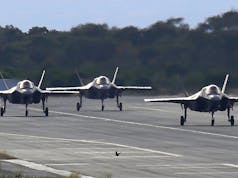
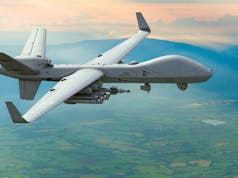
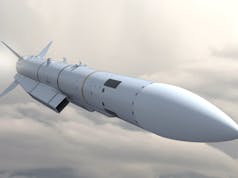

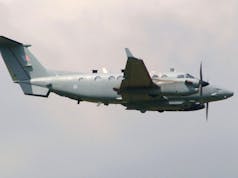

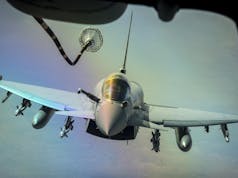



Sorry flanker and mig 31 enter the room?
The US air force (USAF) rates the F-16 as having a greater “combat radius” – meaning the distance it can fly to enter air combat, stay, fight and return – than anything Russia can put into the air.
I’m going to assume the author either doesn’t know much about what he’s written or this should read greater combat radius than mig29 or I’m wrong
Doubtful re the MIG 31- I believe it turns like a buss.
Spot on re the MIG 29 though!
Hi mate, regarding modern air to air combat, do’ Dogfights’ actually still happen? I was under the impression that long range missiles put an end to such engagements years ago, thanks.
It depends. Awacs are not allways available, an attack raid may fall on jets in patrol. Nobody can say that all engagement will be Mach 2 at 60000 feet. Ground air defense make this scenario only available in fluide areas’s like desert or sea.
I would not dismiss dogfight, for thé moment. May be in 20 years with remote cariers and loyal wingman sensor added, it will be possible to avoid it.
In the first couple of months of the war, there were a number of actual dogfights. These were fixed-wing wise between Ukrainian Su25, Mig 29s and Su 27s against similar Russian aircraft, including the newer Su 30/32/34/35. I don’t believe newer Mig35s took part?
A lot of the dogfights involved within visual range combat, especially against very low flying Su25s. The Ghost of Kyiv was founded on these dogfights, though it may have actually involved a number of Ukrainian pilots.
Dogfights are now pretty rare, as Ukraine does not have the aircraft numbers to mount successive combat air patrols. Rather using the low fly attack approach to attack Russians in the occupied territories. They do still mount standing patrols over key cities like Kyiv and Lviv having to rely on ground based radars for coordination.
Plus Russia have got their act together in respect of layering their ground based air defences. Especially as their Army are now predominantly static. Which now makes it doubly hard too operate near, hence why getting the F16/HARM combination is going to be so important.
Ok thanks folks
I think the whole idea that 40 f16s will completely change the dynamic of the air war in Ukraine is very overblown…it’s still a limited number 4th generation aircraft operating in an environment with integrated air defence systems…yes it will increase the capability of the Ukrainian airforce…but historically the success of western air forces has been all about the ability to overwhelm the oppositions integrated air defence system through SEAD/DEAD and operating a mix of assets maintaining very good awareness and control of the airspace….a few F16s will not suddenly give Ukraine that capability ( they will probably still have to maintain their airforce as a force in being more than an offensive force).
Also what monkey said about the range…the Russians have a number heavy fighters with a greater combat radius…and as the F16 is still a light fighter if you load it for bear it’s combat radius plummets.
Don’t get me wrong it’s good Ukraine are getting them….if they transition from soviet airframes to US air frames their ability to maintain them and get attritional resupply will make a difference ( as long as Donald trump does not win the next US election and utterly destroy western/US hegemony).
If I hear it’s a game changer I’m going scream. The F16 will help in certain areas but will also be a prime target. Hope the inflatable F16s are going into production. We know how successful decoy himars were. Russia though it destroyed loads of them when really they popped balloons, broke wooden copies etc.
What I think it will help with is cruise missile/shaheed defence. It’s probably one of the easier missions to learn aswell. Another mission set is SEAD with newer Harm missiles able to use all the capabilities.
Hopefully the F16s can get some kind of quick upgrades to the ECM and any other areas that can be done in time. Maybe britecloud decoys, how effective ECM is I don’t know. Seeing Israeli F16 bring shot down over Syria by an S200 doesn’t fill me full of confidence.
It’s still a good help as operating aircraft where some of the spares are only made in Russia is unsustainable.
As for trump I think he may see the inside of a jail cell before the whitehouse. If the republicans can get through the primaries and get behind a candidate that may be the end of the trump obsession. The USA politics is a bit toxic and I hope whatever happens the help for Ukraine doesn’t stop. The U.K. and Europe should be taking a bigger role just incase.
The fact the U.K. defence budget decreased last year is shocking. Now we should be building more ammo, Vehicle’s and everything else that’s needed. This shouldn’t be coming from the defence budget but a separate special budget. Anything that isn’t used can be kept for another time.
Harm missile need a big buff. In Serbia in the 90’s, 135 missiles had to be shot for one radar kill. It was not a good weapons for SEAD. Regular air to ground ammo where better.
UK really needs to pull it’s finger out with SPEAR 3.
F35 stealth + BVR SPEAR 3 is a formidable DEAD combo but it’s taking far too long to achieve IOC.
As usual the UK produces a unique world leading capability, but it’s too little (quantity) and too late.
Well, we are really at the mercy of LM with this one. Cant really get any further until TR3/Blk4 upgrades are released, then we can integrate all manner of weapons including Meteor and S3 in whatever versions we will be producing by then.
Appreciate that S3 isnt fully ready yet, but wasnt due until 2024 anyway I think.
Believe we are looking at late 27 early 28 before Blk 4 is released in all its glory!
Very true. I guess the situation is a very good argument for building our own planes i.e. GCAP/Tempest.
It does also amaze me that the Israelis get to do whatever they want with F35, but we as a Tier 1 partner have to join the queue.
Yes, that thing with the Israelis is a tad odd I have to admit, think that they have a lot of very powerful friends on the ‘hill’ as it were.
Not only LM but also P&W. Block 4/TR3 power and cooling requirements need the enhanced F135 engine (AETP would have been better). The current engine will have even worse endurance if it must power TR3. Can’t see the ECU for the F135 engine being ready by 2028. Hopefully I am wrong.
Yes absolutely true ref engine power requirements et al. One wonders if the US DOD are regretting canning the GE/RR bid to introduce a second engine thereby generating a competitive element into the program, which is always a good thing. Believe the actual cost at the time was only about $1.5 billion, cheap when you consider where we currently are!
I have read that the power/cooling requirements for the F135 were specified by DoD and were fully compliant by P&W, problem was, DoD specs were wrong. A GE F136 engine using the same specs would have issues as well. Still, the “teen” series fighters benefited from having additional engine vendors who had to out-do each other resulting in improved performance over several decades. The decision not to upgrade the F-35A (and probably C) with AETP was disappointing. A 30% range improvement would have removed one of the biggest negatives about the F-35, it’s rather limited range.
It has been improved a lot since then.
There needs some context around this. For a start the reason HARM had a low success rate was due to the enemy shutting down air defence radars when they knew HARM equipped fighters were in the area. 800 or so SAM missiles were fired but only 2 NATO aircraft were hit as most of the missiles were fired without full radar support. One of those NATO aircraft that was shot down did not have HARM equipped support aircraft with it. So if Ukraine can field HARM equipped F16s then it is possible Russia will protect their air defences by shutting the radars off and thus enable more success with other ground attack. The other thing to note is that HARM has seen many upgrades since the 90s…
With today’s HARM it doesn’t matter if you shut off the radar for a few minutes. HARM now has an integrated GPS. It uses this with other sensors such as the HTS, to triangulate where the the radar was emitting from. Giving the pilot the option of firing the missile at the last known location. So against large static SAM systems like the S300/400, there’s a very good chance that the radar although shut down, is still in the same location. Something like Buk or Tor will a bit trickier to target, as they can scoot to a new location easier.
HARM can be used against most types of radar, which includes airborne. It can also be used against other emitters that transmit within its sensor bandwidth.
Game changer is possibly a little strong, But it will be a significant benefit as the range of missiles the F16 can carry is pretty large and it will give the Ukrainian’s more standoff ground attack capacity. Including making the Harpoon far more deadly and thus keeping Russian ships further away. It will certainly mean that the Russians will probably want to keep their aircraft further away from the frontline. All of this matters a great deal.
Fully agree.
A few Gripens with Meteor would be far more transformative. The Swedes do seem increasingly willing but understandably they aren’t giving any away until they are under the NATO umbrella. So unfortunately that’s currently at the mercy of Putin’s stooges like Orban.
For Ukraine, I’d say the Gripen would be much better suited to their needs compared to the F16. Especially when you consider that it was designed for operating from rough strips and roads. Plus just as importantly have a much faster turn-around time for maintenance and re-arming. Which means it will be less easy to target by Lancet type drones when not flying.
OK, I won’t say Ukraine getting F16s will be a game changer. But they will become quite a headache for the Russian forces in general.
It is not the aircraft on its own, but as an integrated weapons platform that will make the difference. But I will caveat that, with the reminder that initially Ukraine will likely be getting the Dutch and Danish aircraft first. Bearing in mind these aircraft were original model A/B versions, that then had a mid-life upgrade to bring them up to the C/D standard. They are not the latest Block 50+ or 70/72 aircraft. So they don’t have the latest glass cockpit, radar and other systems seen in the Block 70/72 especially.
What it does mean though, is that the HARM when used with the HARM Targeting System (HTS) can be used as an active SAM hunter. The Dutch F16s also use the Sniper reconnaissance/designator pod in conjunction with the HTS, to help identify targets passively. That are then attacked by either HARM, Maverick, Paveway, JDAM or the small diameter bomb (SDB). Neither Holland or Denmark have a long range land attack stand-off missile in their inventory. But it is possible that a “friendly” Nation offer them the JSOW. Which is really a slightly bigger version of the SDB, as its not powered, so its range is limited by the drop height. Norway started the process of integrating the JSM, but with their purchase of the F35, they put the process on the back burner.
In the air to air role, the Dutch/Danish aircraft’s current radar is fairly basic by today’s standards. However, it does means that the aircraft can fire the AMRAAM C-7 version. Which is a step change in capability compared to what Ukraine currently uses. Though without AEW support, they won’t be able to use the full benefits of AMRAAM. The Su27s radar is more powerful than the F16s, so there could be a case of pairing the Su27 and F16 together. Where the Su27 finds the threats.
Another thing to bear in mind is that the F16 is no Gripen. The F16 was designed to operate from long smooth, non-fodded runway, not roads for example. A lot of this is due to the belly mounted engine air intake. Also compared to the Gripen, it has a longer maintenance.re-arm turn-around time. Therefore Ukraine will have to get quite robust/inventive on how they operate these aircraft.
Yes F16 aircraft will next year help to support any Ukrainian offensive and blunt any Russian attacks, my worry is that we are playing a last minute dot com game here. I hope NATO can train the Ukrainian military in various weapons systems before we announce to Russia and the world what are next move is.
how long has the west support for a Ukrainian got to run? 1-5 yrs? 10+ years? Putin cannot afford to lose and give ground in any large amount. Can Ukraine? What’s and Ifs are always the case in any conflict, I don’t see anything at present that is going to change the course of this bloody conflict quickly. I hope my post doesn’t sound too doom and gloom, I just hope are so called leaders of the western world can work together for the long haul. I have a huge respect for the Ukrainian people and wish them a victory and lasting peace.
The F-16 will do nothing to enhance Ukraine, it is old, outdated, far to short in combat radius of action and will be destroyed easily on the ground as they are maintenance heavy and require a perfect runway surface for operations. Simple cluster bombs, as demonstrated by the Russians in Syria, would easily and quickly prevent then from taking off, then they’re sitting targets.
However as the Ukrainians only have a handful of pilots fluent enough in English to even be trained to fly them, they will be lucky to have even a couple in operation by this time next year. Add to that the truly horrific Ukrainian casualty and equipment loss figures recently revealed by the Pentagon, the conflict will probably be finished with Ukraines defeat, whatever the USA OR UK postulates.
Those with a more “Kremlin friendly” leaning have been stating that “Ukraine’s defeat” is inevitable since Feb 22; yet here we are, nearly 19 month later, and they are still in the fight. Their backs are against the wall, but they have fought back against the Russian aggressor with strength, courage and ingenuity in the face of overwhelming odds.
And they are still succeeding.
It amuses me though to think that the very challenges you highlight about F16 operations won’t have been considered by both the Ukrainians and their Western allies. Do you seriously think they will base the aircraft on known airfields without establishing some sort of defensive capability to protect them?
I also seem to recall another instance, back in 1940, when an air force faced an opponent with overwhelming superiority; and through a combination of superior tactics and poor decision making by their adversary, they held their own.